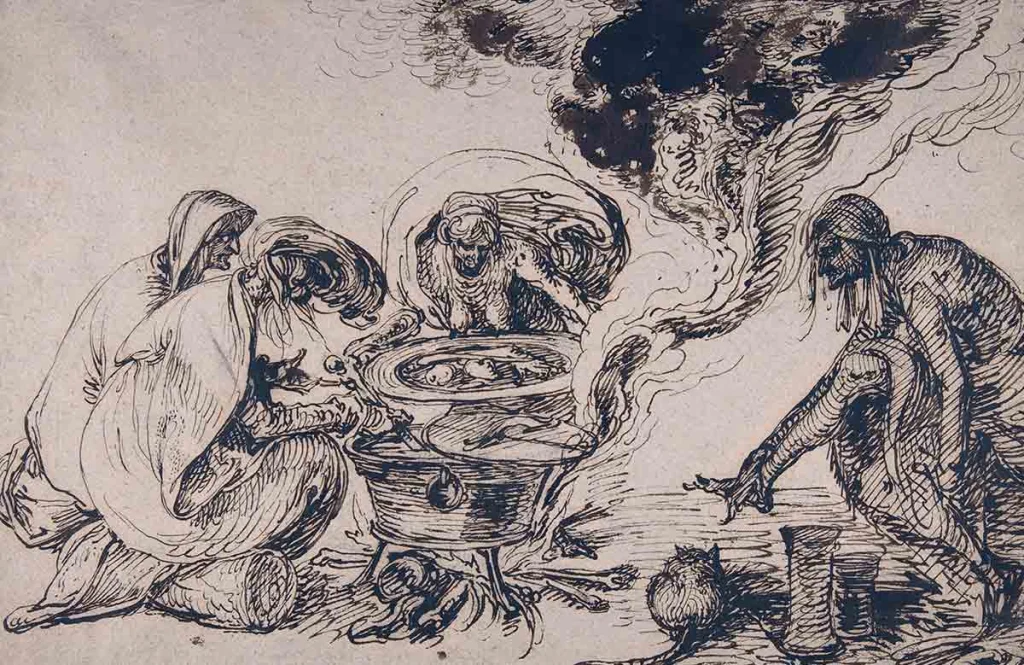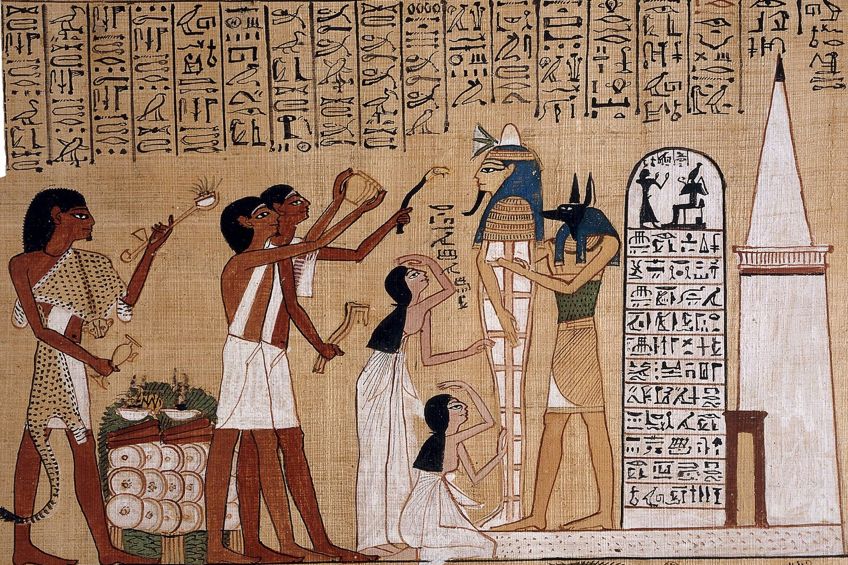The ancient world was a tapestry woven with trade routes, exotic goods, and powerful kingdoms. Among these, the kingdom of Hadramawt, located in what is now Yemen and Oman, held a unique and coveted position. Known to the Romans as “Arabia Felix” (Fortunate Arabia), this region was the source of one of antiquity’s most prized commodities: frankincense. This aromatic resin, burned in temples and used in medicines, fueled a vast trading network that connected the Mediterranean world with the East. This post delves into the fascinating history of the Hadramawt Kingdom, focusing on its strategic port of Qana and its role in the lucrative frankincense trade.
The Rise of Hadramawt and the Control of Frankincense
Following the decline of the Sabaean Kingdom in the late first century BC, the Hadramawt emerged as a dominant power in southern Arabia. A key factor in their rise was the control they seized over the frankincense groves of Dhofar, a region along the highland coast. Frankincense, derived from the resin of Boswellia trees, was not merely a luxury item; it was integral to religious practices and medicinal applications across numerous cultures.
The Hadramawt shrewdly transformed frankincense production into a state-run enterprise. All produce belonged to the king, effectively creating a royal monopoly. By the first century AD, their control extended over a vast seaboard stretching approximately 500 miles from Yemen to Oman. This dominance is reflected in the Periplus of the Erythraean Sea, a Greco-Roman navigational guide, which refers to the region as “the Frankincense-Bearing land” or “the Kingdom of Eleazos.” The name “Eleazos” likely derives from the dynastic name Il’azz, found in Hadramawt royal inscriptions.
Qana: The Gateway to Frankincense
Located about 220 miles east of Eudaimon Arabia (modern Aden), Qana served as the primary port and collection point for Hadramawt frankincense. The journey from Berenice on the Red Sea to Qana could take just over four weeks with favorable summer trade winds, as confirmed by Pliny the Elder. The coastline between Eudaimon and Qana was sparsely populated, featuring dramatic landscapes of sandy beaches and volcanic rock formations.
Qana itself was strategically positioned just outside the frankincense-growing region. It functioned as a central warehouse where the precious resin was gathered from various outposts in the highlands. Harvests were transported to Qana via both land and sea. Land routes were carefully monitored through mountain valleys with guard stations and checkpoints. Sea transport utilized boats and rafts made of leather bags, a testament to local ingenuity.
The port itself was situated on a large sandy bay, dominated by a flat-topped volcanic promontory rising 450 feet above the beach. This promontory was a heavily fortified installation, managed by royal agents, underscoring the importance and value of the frankincense trade. Stone storerooms were built into the cliff face, capable of holding vast quantities of the incoming resin. Archaeological excavations have revealed large chambers with rows of internal pillars, each offering a storage area of approximately 1,000 square feet. Estimates suggest that more than eight such chambers would have been necessary to store the entire summer harvest.
Trade and Security at Qana
The high promontory at Qana was heavily guarded, likely restricting access to most foreign merchants. Steep stone staircases leading to the summit were protected by walls and watchtowers. A citadel at the top housed a temple structure that probably served as a beacon for incoming ships. Large cisterns within the fort collected rainwater to sustain the Hadramawt garrison.
Evidence of an ancient attack on Qana has been uncovered, with archaeologists finding the charred remains of woven bags, palm baskets, and destroyed frankincense stocks. This suggests a raid by a rival power, though the inner fortress on the summit remained unbreached.
A caravan road connected Qana to the inland Hadramawt capital, Sabota, located in the Wadi Hadramaut. While some frankincense was transported to Sabota for royal use and distribution, the majority remained at Qana for trade. The port attracted merchants from across the Indian Ocean, including the Persian Gulf, the Parthian Empire, southern Iran, the Indus region, and the Saka Kingdom in Gujarat. This diverse mix of traders created a vibrant marketplace where frankincense was exchanged for a wide array of goods. The Periplus notes that Qana traded with “ports across the sea, including Barygaza, Scythia, Omana and its neighbour Persia.”
Peak trading season at Qana occurred in October and November, when ships from the Red Sea, Persia, and India converged. The Hadramawt likely timed the release of their main frankincense stocks to coincide with this period of high demand, maximizing their profits through competition among buyers. Acquired foreign goods were then transported to Sabota and sold to the Hadramawt population by royal agents.
Archaeological findings at Qana vividly illustrate the extent of foreign trade. Only a quarter of the pottery fragments found at the site are of local origin. Archaeologists have discovered elegant pink-clay tableware from Nabataea, rough pottery from Adulis in East Africa, green-glazed pottery from the Parthian Empire, and storage vessels from the Persian Gulf. Indian involvement is evidenced by finds of red polished tableware.
Roman merchants offered a variety of goods at Qana, including printed fabrics, Arab-style clothing, copper, tin, red coral, and storax perfumes. They also traded items popular in Indian markets. Other Roman exports mirrored those traded in Muza, such as purple cloth, patterned clothing, gold-threaded garments, striped waistbands, cloth bundles, blankets, saffron, cyperus, fragrant unguents, and imperial money. A limited amount of Egyptian wheat was also offloaded, likely for the Hadramawt garrison or resident Roman merchants.
Roman crews often spent several weeks at Qana awaiting the arrival of eastern ships and the release of the frankincense crops. A significant portion of the Mediterranean pottery found at the site likely belonged to these crews. Over half of the pottery fragments are from Roman amphorae, used for transporting wine and other liquids. Some fragments originated from containers that once held garum, a fermented fish sauce from Spain.
About a fifth of the Roman pottery fragments found at Qana contain black volcanic specks, indicating their origin in the Campania region of Italy, near Mount Vesuvius. The eruption of Vesuvius in AD 79 significantly impacted this trade, damaging wine production and likely leading Roman merchants to increase their export of bullion to Qana as a substitute. Fine-quality Italian tableware (terra sigillata) from the Augustan era has also been discovered, including a shard bearing the stamp of Agathemerus, a manufacturer with workshops in eastern Sicily. Fragments of Roman glassware suggest either personal use by traders or another export commodity.
The Periplus mentions expensive gifts destined for the Hadramawt royal court, including embossed silverware, large amounts of coin, prized horses, classical statues, and expensive clothing. These luxury items, along with bullion, secured the best stocks of state-owned frankincense. While the Periplus doesn’t detail the journey from Qana to Sabota, it’s likely that royal agents at the port handled the delivery of profits and royal property to the ruling court.
Roman ships primarily acquired frankincense grown in the Hadramawt-controlled highland plantations. By AD 50, the Hadramawt also controlled the African island of Socotra, shipping its frankincense and aloe crop to Qana. Aloe was highly valued in the Roman Empire for its medicinal properties. Roman merchants ending their voyages at Qana could also trade with other foreign visitors, acquiring goods from Africa, Persia, or India.
Roman ships often faced ballast issues after unloading heavy cargoes at Muza and taking on lightweight incense. To address this, ships heading to India often loaded Arabian wines at Qana. Local containers were unsuitable for liquids, so palm wines were likely shipped in goat-skin flasks or decanted into Mediterranean amphorae, providing crucial weight and stability. Stacks of volcanic rocks found at Berenice and Myos Hormos on the Red Sea provide evidence of this practice, with the majority of ballast at Berenice originating from Qana.
Socotra: An Island of Trade and Mystery
Socotra, located off the Horn of Africa, played a significant role in Arabian maritime trade. Although eighty miles long and thirty miles wide, it was closely associated with southern Arabia. Greek merchants from Egypt visited the island in the first century BC, meeting ships from India. The Romans called it “Dioscurides,” a Greek adaptation of the Sanskrit “Dvipa Sukhadhara” (Island of Bliss), and considered it part of Arabia.
The Periplus describes Socotra as a large island with desolate stretches and damp regions watered by inland rivers. Its unique wildlife included crocodiles, vipers, and large lizards. The island was thought to lack agricultural products, requiring settlers to import grain and wine.
Socotra’s climate was suitable for frankincense cultivation. Its native trees produced a deep red resin called “dragon’s blood,” highly sought after for its medicinal properties and use as a pigment. The Periplus refers to it as “Indian cinnabar.” Most of the frankincense and aloe grown on Socotra was likely shipped to Syagros and then to Qana.
Another major export from Socotra was tortoiseshell, used by the Romans for furniture veneers. Hawksbill turtles were hunted around the coast, and land tortoises were common. The Periplus details the different types of tortoiseshell available, including a large mountain variety with a thick shell suitable for crafting small objects.
In the Augustan era, Roman ships sometimes visited Socotra after trading at Muza. However, this direct trade ended when the Hadramawt seized control of the island. The Hadramawt king leased the island to a consortium of Arab merchants who managed it as a business venture, hiring guards and prohibiting Roman landings. Ancient stonewall boundaries suggest the establishment of plantation plots. Myrrh trees, now a feature of the island, may have been introduced during this period. The consortium likely sold Socotra’s products in major Arab ports or even Roman markets. Ancient documents and inscriptions found in a cave on Socotra, written in Nabataean, Indian, Ethiopian, and Palmyrene languages, confirm this diverse trade network.
The Frankincense Coast and Beyond
Beyond Qana lay Sachalites Bay and the headland of Ras Fartak, known to Roman sailors as “Syagros” (Wild-Boar Promontory). This was a crucial landmark for Roman ships sailing to India. The Arabian Sea in this region was home to large whales, which sailors would attempt to scare away with shouts and trumpets.
Syagros was the furthest point in Arabia regularly visited by Roman merchants. The Hadramawt maintained a fortress at Syagros, protecting the harbor and serving as a temporary storage point for frankincense destined for Qana. Syagros was also likely the main port for Hadramawt ships traveling to Socotra.
Pliny the Elder locates the main frankincense-growing region about eight days’ travel from Sabota, referring to it as “Sariba.” While Herodotus had described the region as being guarded by winged serpents, Pliny dismissed these as fabrications meant to inflate prices. By the mid-first century AD, the Hadramawt kings were collecting a second harvest of frankincense, reflecting the increased demand for the product.
Few Romans had seen the frankincense coast east of Syagros. The Periplus describes the land as mountainous, with a misty and oppressive atmosphere. Roman merchants were aware that the frankincense trees were medium-sized and produced resin that “congealed from the bark.” Pliny describes the region as surrounded by impenetrable rocks and cliffs, with natural forests extending down to the plain. Foreign travelers were not permitted in the region, hence the lack of detailed knowledge.
Before Hadramawt control, Sabaean families managed the woodlands as inherited plots, adhering to ritual purity during harvesting. The Hadramawt, however, confiscated the groves and used slave labor. The Periplus describes the area as unhealthy and dangerous, with workers often dying from lack of nourishment. These reports, whether entirely accurate or exaggerated, effectively discouraged Roman visits.
East of Syagros Fort was Omana Bay, followed by a coastline of “high mountains, rocky and sheer, where men live in caves.” Along this coast was another Hadramawt harbor-fortress called Moscha Limen (modern Khor Rori). Moscha was a fortified collection point at the eastern limit of the frankincense-producing region. Hadramawt ships based at Moscha transported frankincense to Qana. Syagros Fort and Moscha Harbour effectively guarded the frankincense highlands, controlling access to the coastline.
Moscha was established on a natural harbor, reached through a narrow inlet. The town was surrounded by thick stone walls and defensive towers, with a complex entrance designed to impede attackers. Archaeological excavations at Khor Rori have revealed paved streets, residential zones, warehouses, temples, and a marketplace. An inscription indicates that Moscha was founded by royal directive, with its population conscripted from inland Hadramawt. The entire facility appears to have been planned and built in the late first century BC, consistent with the Hadramawt conquest of the region.
Ancient grains of frankincense have been found at Moscha, along with grinding stones suggesting nearby farmsteads. However, the colonists were likely dependent on food supplies from the Hadramawt homeland.
Sometimes, Roman ships heading for India were delayed and forced to winter at Moscha. Indian ships, often sailing later in the season, were more frequently caught by the changing winds and forced to harbor there. The Periplus confirms this, noting that ships from Limyrike or Barygaza might winter at Moscha. An image of a two-masted Indian ship found on a building wall and fragments of Roman cookware at the site provide further evidence.
The harbor service at Moscha allowed visiting ships to exchange goods like cotton cloth, grain, and oil for sachalite frankincense, but only with royal permission. The Periplus recounts stories of divine protection over the port, emphasizing the Hadramawt’s absolute control over the frankincense trade.
In AD 50, Moscha Harbour marked the eastern limit of the Hadramawt Kingdom. Beyond lay the mountain range of Asichon (Ras Hasik) and the seven isles of Zenobios (Khuriya Muriya), known for their turtle nesting grounds. The coast beyond Zenobios was considered part of the Persian Kingdom. Claudius Ptolemy later indicates that the Hadramawt extended their control east of Moscha, establishing a naval base called Neogilla, likely involved in policing shipping or controlling offshore resources. This suggests the Hadramawt may have seized the Zenobios Islands to control the collection of valuable turtle-shell.
The story of the Hadramawt Kingdom, Qana, and the frankincense trade is a testament to the power of commerce, strategic control, and the enduring allure of exotic goods in the ancient world. It provides a fascinating glimpse into a complex network of trade routes, political maneuvering, and the lives of those who navigated the treacherous waters and harsh landscapes of Arabia Felix.









































